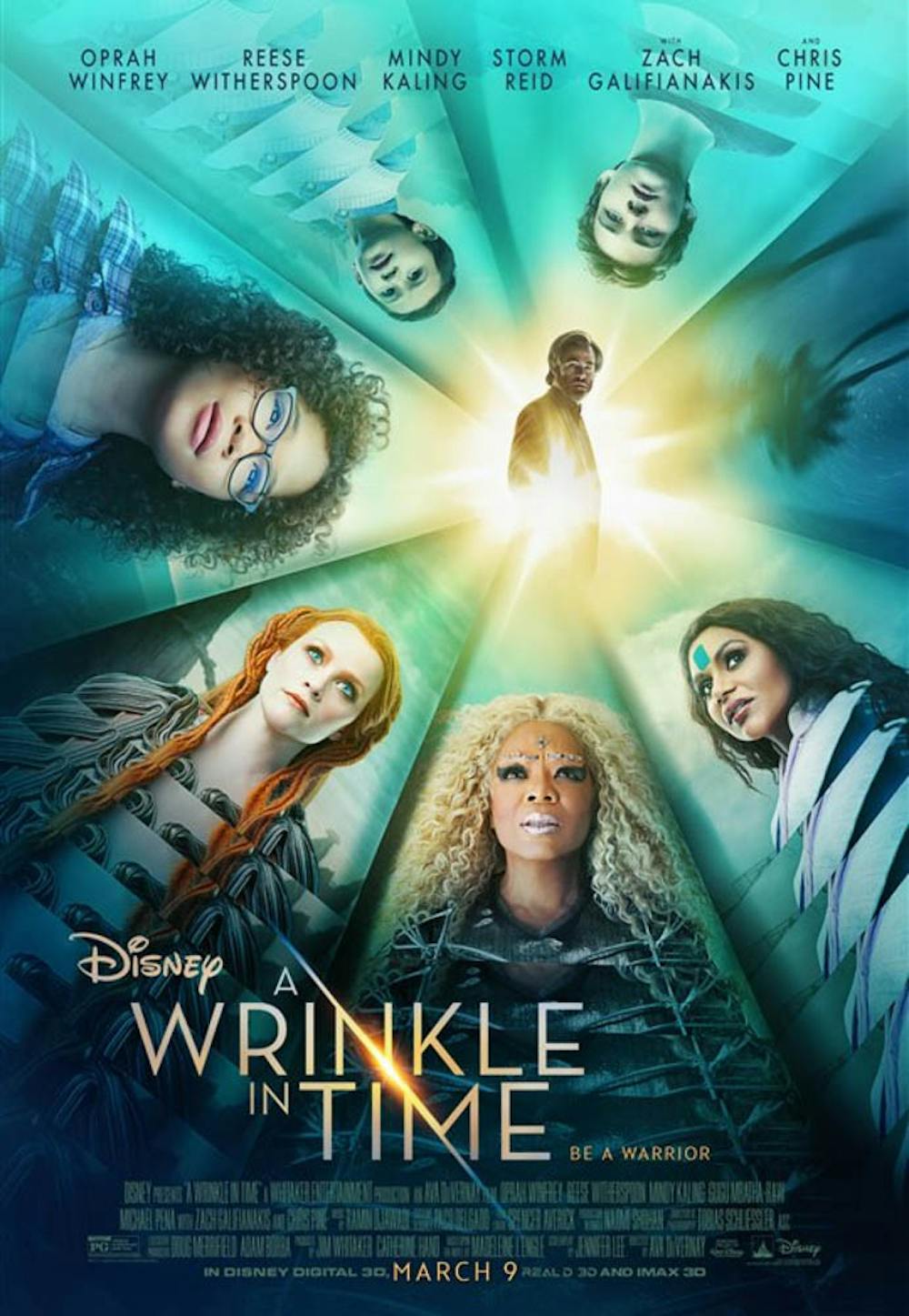“A Wrinkle in Time,” the latest film from director Ava DuVernay, has such a decent heart that it feels cruel to strike it down. But it’s probably best to come out and say it: “A Wrinkle in Time” is a disappointment — an ambitious, even touching one, to be sure, but a disappointment all the same.
There was good reason to hope that “A Wrinkle in Time” would be a success. For one, it’s based on Madeleine L’Engle’s novel of the same name, a delightfully weird classic of children’s literature. And DuVernay, who with this becomes the first black woman to ever direct a film with a budget of over $100 million, has a diverse, impressive resume, from sensitive indies, such as “Middle of Nowhere,” to last year’s documentary “13th.” But “A Wrinkle In Time” sees her making a series of unfortunate, sometimes bizarre choices. And while Hollywood could certainly use an injection of the bizarre these days, DuVernay doesn’t quite supply the kind to do the trick this time around.
Meg, played by Storm Reid, is a smart but insecure girl who has become more introverted and difficult since the disappearance of her scientist father, Mr. Murry, played by Chris Pine, four years ago. She lives with her mother, played by Gugu Mbatha-Raw, also a scientist, and her genius younger brother, Charles Wallace, played by Deric McCabe. At school, she’s the nerd with the absent father and weird little brother, and endures the taunts of classmates and stern words of the principal.
Soon enough, intergalactic curiosities start filtering into the story, beginning with the arrival of Reese Witherspoon as Mrs.Whatsit, who drops references to Meg’s father. Mindy Kaling as Mrs. Who and Oprah Winfrey as Mrs. Which follow, and together they whisk Meg, Charles Wallace and Calvin, a new friend of Meg’s played by Levi Miller, off to find Mr. Murry.
Most of these first scenes feel oddly limp, with the bullying presented as we’ve always seen it — a line of sneering girls standing in a row — and Mrs. Whatsit’s arrival landing with a wonderless thud. The camera stumbles upon her, as if it took a second for the cinematographer — Tobias Schliessler, a marked step down from DuVernay’s previous collaborator, Bradford Young — to point it in the right direction.
This clumsy camera work frames the whole film. That DuVernay should have this problem is surprising, since her show “Queen Sugar” has some of the best compositions on television. But the intentional, character-driven framing that works so well there gets transmuted into something awkward and heavy-handed on the big screen, full of close-ups that at once crowd the audience and distance the characters from each other. The film is not alone here; there’s a crisis of craft in Hollywood right now, and “A Wrinkle in Time” isn’t immune.
That said, the film has its impressive moments. In one scene, Meg, Charles Wallace and Calvin fly on the back of a transmogrified Mrs. Whatsit, and the soaring aerial shots are wide-eyed and dazzling. Also, it’s hard not to be delightedly agape at the sight of a one-hundred-foot-tall Oprah.
Indeed, Oprah is indicative of the largely top-rate cast. Other than Miller and McCabe, two typically bad child actors, everyone delivers, including Reid as the protagonist. But best of all is Pine as the absent father, who once again proves himself to be the most talented and versatile Chris in the business. In one scene, we witness Mr. Murry struggle for any scrap of family that he can hold on to with a heartbreaking desperation that briefly jolts the movie into a genuinely affecting realm.
But despite her great cast and obvious emotional intelligence, DuVernay can’t escape the flaws of the script. Flitting from place to place across the galaxy, it has a half-baked episodic quality to it, where the individual events and adventures neither build powerfully onto each other nor stand on their own as exciting planetary pit stops. The dialogue, meanwhile, too often leans on empowerment mantras, which range from sweetly well-intentioned to laughably trite. The soundtrack — including a handful of R&B and pop songs written for the film — is similarly ham-fisted.
“A Wrinkle in Time” is very much a children’s movie, and will likely appease — maybe even inspire — the youngsters who see it. For everyone else, it may be a bit of a bore, to be remembered more for the historical landmark it represents than the glittering mess of its plot. And that’s okay. The first $100 million movie directed by a woman was Kathryn Bigelow’s “K-19: The Widowmaker.” Remember it? Neither do I. Bigelow, on the other hand, didn’t fade away, and became the first woman to win the Oscar for best director in 2010 for “The Hurt Locker.” So, if history’s any guide — and I suspect it will be — there’s no need to worry about DuVernay. She’s not going anywhere.





